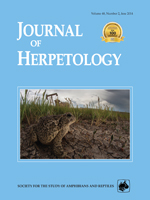Mapping species' distributions is a primary challenge when managing cryptic lineages of conservation concern. In the case of unisexual Ambystoma salamanders, mapping geographic distribution of genotypes can also help us understand the evolutionary dynamics of one of the most intriguing vertebrate reproductive systems. We combined a mitochondrial sequencing technique with existing nuclear microsatellite methods to map genotypes in 15 Ambystoma populations throughout Massachusetts. We found that the host species A. jeffersonianum and A. laterale have disjunct east/west distributions, whereas unisexuals are distributed widely in Massachusetts. We did not find both host species at any single locality. In our samples, unisexuals outnumbered either host species in 11 of 15 populations. Ambystoma jeffersonianum nuclear genomes were present in at least 97% of unisexual salamanders in regions where A. laterale and unisexuals exist but A. jeffersonianum mitochondria were absent. If previous studies of the unisexual reproductive mode are correct, our observations suggest that natural selection favors hybrid nuclei in these populations.
How to translate text using browser tools
1 June 2014
Mapping Genotype Distributions in the Unisexual Ambystoma Complex
Noah D. Charney,
Andrea T. Ireland,
Brian R. Bettencourt
ACCESS THE FULL ARTICLE

Journal of Herpetology
Vol. 48 • No. 2
June 2014
Vol. 48 • No. 2
June 2014




